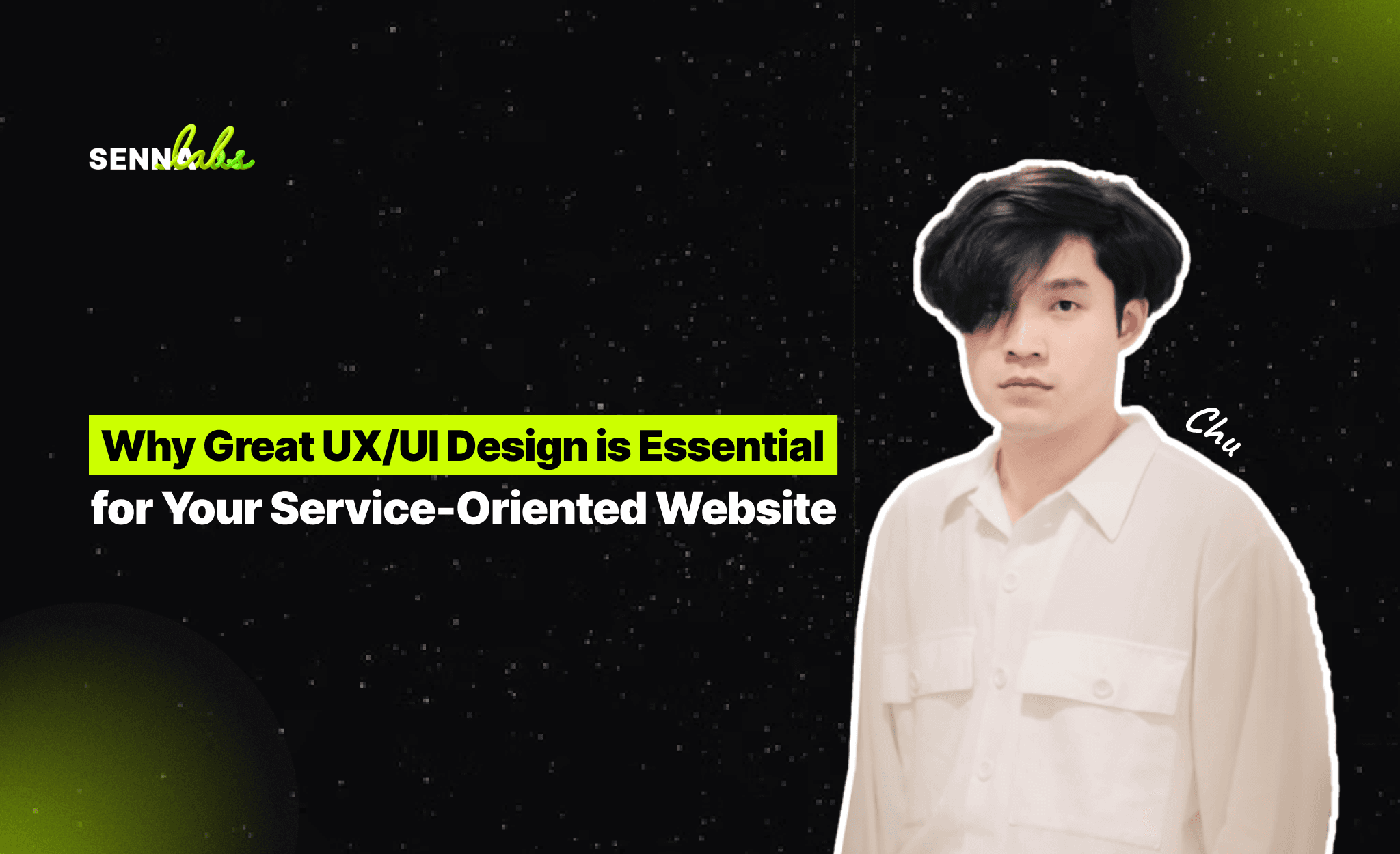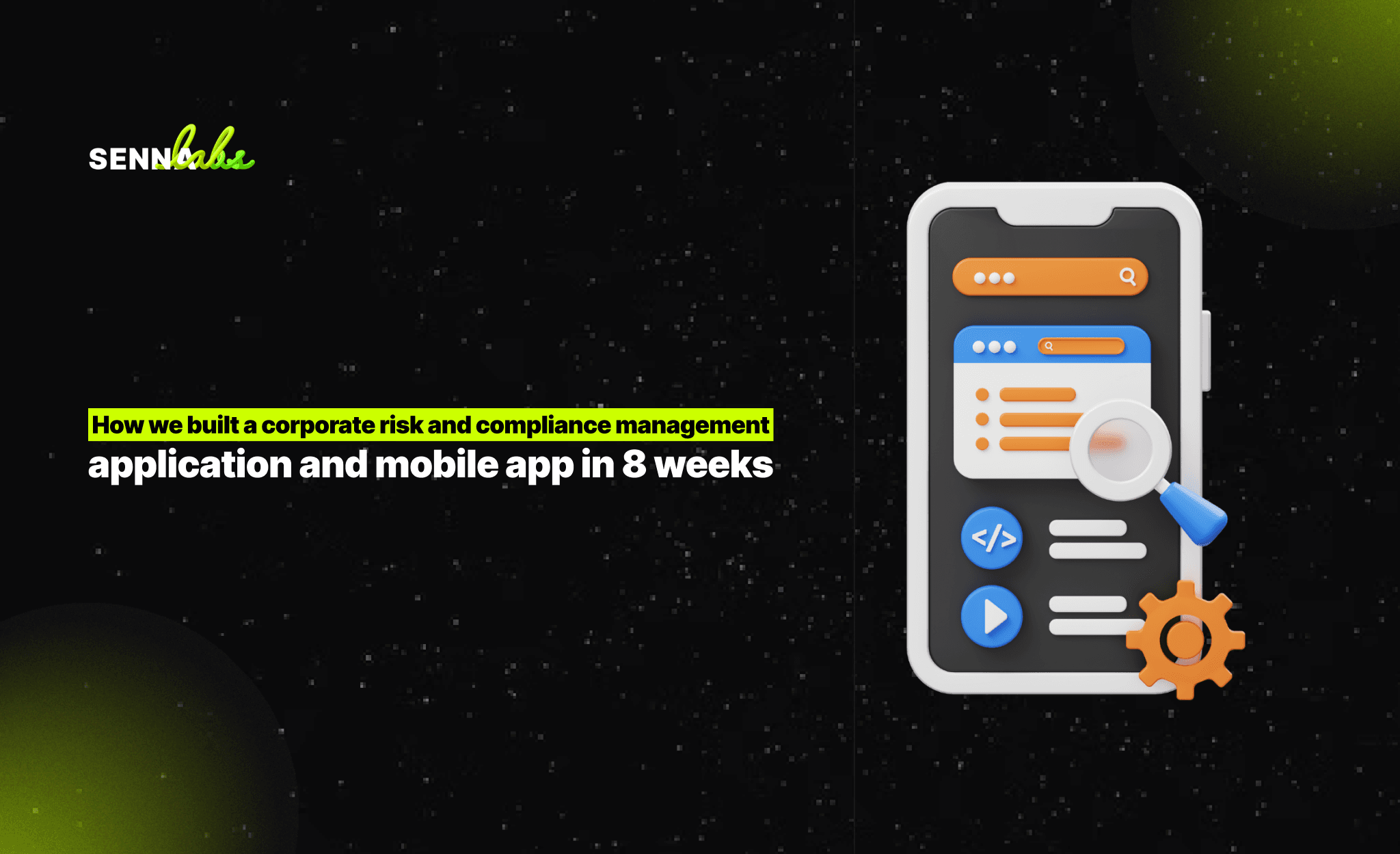Why Great UX/UI Design is Essential for Your Service-Oriented Website
Share

For businesses that provide services—such as digital marketing agencies, consulting firms, or healthcare providers—having a strong online presence is essential to attracting, engaging, and retaining clients. However, it’s not enough to simply have a website; your site needs to provide a seamless, efficient, and user-friendly experience. This is where UX/UI design (User Experience and User Interface design) plays a crucial role.
For a digital marketing agency, the website is not only a platform for showcasing services but also a key tool for client interaction, whether it's scheduling consultations, accessing resources, or learning more about the services provided. A well-designed UX/UI ensures that these processes are intuitive, smooth, and enjoyable, encouraging clients to stay engaged and build a long-term relationship with your agency.
In this article, we’ll explore why great UX/UI design is essential for your service-oriented website and how it can improve client engagement and retention—especially in the context of a digital marketing agency.

What is UX/UI Design and Why Does It Matter for Service-Oriented Websites?
Before diving into the specifics of how UX/UI design can benefit your website, it’s essential to understand what UX and UI mean and how they relate to your website’s overall effectiveness:
UX Design (User Experience Design)
UX design focuses on the overall experience a user has when interacting with a website. It’s about creating an intuitive, seamless, and efficient journey for visitors—from landing on your site to completing a desired action, such as booking a consultation, filling out a contact form, or subscribing to your services. A good UX design reduces friction points, makes interactions feel natural, and ultimately encourages users to return.
UI Design (User Interface Design)
UI design is the visual aspect of the website—everything the user interacts with on the screen. This includes the design of buttons, menus, text, images, icons, and more. It’s all about ensuring the website looks aesthetically pleasing while making it easy for users to interact with the site’s elements.
For a service-oriented website, having an intuitive and visually appealing UI ensures that users feel comfortable navigating the site and are more likely to convert their interest into action.
How Great UX/UI Design Drives Client Engagement and Retention
1. Simplifies the Booking Process
For service-oriented websites, one of the most important functions is enabling users to book consultations or appointments. If this process is complicated or unclear, users are more likely to abandon the website without completing the desired action. Great UX/UI design simplifies the booking process, making it easy for clients to schedule consultations or services with minimal effort.
Best Practices for Simplifying the Booking Process:
-
Clear Call-to-Action Buttons (CTAs): Use prominent and action-driven CTA buttons such as “Book Now” or “Schedule a Consultation” to guide users toward the booking process.
-
One-Page Booking Form: Reduce friction by creating a single-page form where clients can easily fill out necessary details like name, contact information, and preferred consultation time.
-
Easy Calendar Integration: Provide clients with an easy-to-use calendar where they can see available time slots in real-time. This allows them to quickly select an available slot without having to wait for a response.
By streamlining the booking process, UX/UI design minimizes barriers to conversion, ultimately boosting client engagement and retention.
2. Creates a Trustworthy and Professional Image
First impressions are crucial in establishing credibility, especially for service-oriented businesses like digital marketing agencies. A clean, professional design gives visitors the impression that your agency is reliable and capable. Clients want to work with a business they trust, and a well-designed website plays a major role in fostering that trust.
Best Practices for Building Trust with UX/UI Design:
-
Consistent Branding: Ensure that your website’s color scheme, fonts, and visual elements align with your brand identity. Consistent branding helps reinforce your professionalism and makes your business appear more cohesive and credible.
-
Trust Signals: Incorporate elements such as client logos, testimonials, case studies, and certifications to provide social proof and build confidence with potential clients.
-
Simple and Elegant Design: Avoid clutter and unnecessary elements that could distract from the primary purpose of your website. Clean, minimalist design ensures that users can focus on key messages without distractions.
A polished and professional website builds trust with visitors, increasing the likelihood that they’ll engage with your agency and choose to work with you.
3. Improves User Engagement with Clear, Relevant Content
Your website's content is one of the primary ways you communicate with your audience, and how it’s displayed can greatly influence user engagement. A great UX/UI design ensures that content is easy to read, well-organized, and engaging, helping users find the information they need quickly and easily.
Best Practices for Optimizing Content Layout:
-
Well-Organized Information: Use clear headings, subheadings, and bullet points to make content easily scannable. Visitors should be able to quickly understand what services you offer and why they should choose you.
-
Relevant and Concise Content: Keep your content focused and to the point. Avoid overwhelming visitors with excessive information. Instead, provide just enough to engage them and prompt them to take action.
-
Visual Content: Incorporate high-quality images, videos, and infographics to break up text and make the content more engaging. Show real examples of your work, such as past client results or case studies, to showcase your expertise.
By presenting your content in an engaging and easy-to-understand format, you increase the chances that users will stay on your site longer, leading to higher engagement and increased retention.
4. Reduces Friction and Increases Conversions
Friction points are obstacles that prevent visitors from completing desired actions, such as booking a consultation or filling out a contact form. These obstacles can result from a confusing website layout, unclear instructions, or too many steps in the process. Good UX/UI design minimizes these friction points, making it easy for users to convert without confusion or frustration.
Best Practices for Reducing Friction:
-
Simplify Forms: Reduce the number of fields required in forms, focusing only on the most essential information. Long, complicated forms can discourage visitors from completing their submissions.
-
Clear and Actionable CTAs: Use buttons and links with actionable language like “Get Started,” “Download Our Brochure,” or “Request a Quote.” These CTAs should be visible and easily clickable.
-
Progress Indicators: If your website requires multiple steps (e.g., a multi-page form), use progress indicators to show users how far along they are in the process and how many steps are left.
Reducing friction increases the likelihood that users will follow through with actions, improving conversion rates and ensuring that potential clients can easily engage with your agency.
5. Enhances Mobile Experience
More than half of internet traffic now comes from mobile devices, making it essential that your service-oriented website is optimized for mobile users. A mobile-optimized site ensures that clients can easily access your services and book consultations on their smartphones, whether they’re at home or on the go.
Best Practices for Optimizing Mobile UX/UI:
-
Responsive Design: Use responsive web design to ensure that your website adapts to any screen size, whether it’s a smartphone, tablet, or desktop.
-
Mobile-Friendly Navigation: Simplify navigation on mobile devices by using a hamburger menu or sticky navigation bar that’s easy to access and use on small screens.
-
Fast Load Times: Optimize images and reduce unnecessary scripts to ensure that your website loads quickly on mobile devices, as slow load times can lead to higher bounce rates.
A seamless mobile experience helps retain visitors and increases the likelihood that they’ll engage with your services, improving overall client satisfaction.
Conclusion:
For service-oriented businesses like digital marketing agencies, UX/UI design is a critical tool in creating a website that drives client engagement and retention. By focusing on intuitive navigation, simplifying the booking process, creating a visually appealing interface, and reducing friction points, you can improve the overall user experience and make it easier for clients to interact with your services.
Ultimately, great UX/UI design not only helps attract visitors but also converts them into loyal clients who return for future services. Investing in a user-friendly website that caters to your clients’ needs and preferences is key to building long-term relationships and driving the continued success of your business.
By prioritizing UX/UI design and constantly refining your website to meet the evolving needs of your clients, you can increase conversions, foster trust, and ensure that your service-oriented website remains a vital tool for business growth.

Share

Keep me postedto follow product news, latest in technology, solutions, and updates
Related articles
Explore all


